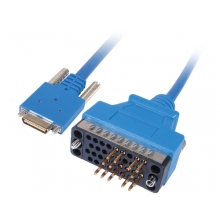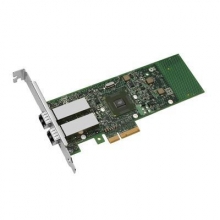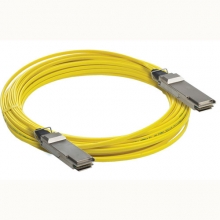- Optical Transceivers
- SFP+ Transceivers
- XENPAK Transceivers
- XFP Transceivers
- X2 Transceivers
- SFP Transceivers
- Compatible SFP
- 3Com SFP
- Alcatel-Lucent SFP
- Allied Telesis SFP
- Avaya SFP
- Brocade SFP
- Cisco SFP
- D-Link SFP
- Dell SFP
- Enterasys SFP
- Extreme SFP
- Force10 SFP
- Foundry SFP
- H3C SFP
- HP SFP
- Huawei SFP
- Intel SFP
- Juniper SFP
- Linksys SFP
- Marconi SFP
- McAfee SFP
- Netgear SFP
- Nortel SFP
- Planet SFP
- Q-logic SFP
- Redback SFP
- SMC SFP
- SUN SFP
- TRENDnet SFP
- ZYXEL SFP
- Other SFP
- FE SFP
- GE SFP
- OC3 SFP
- OC12 SFP
- OC48 SFP
- Copper SFP
- CWDM SFP
- DWDM SFP
- BIDI SFP
- Fiber Channel SFP
- Multi-Rate SFP
- SGMII SFP
- Compatible SFP
- GBIC Transceivers
- Passive Components
- Networking
- Cables
- Equipments
- Tools
- Special Offers


Multi-Mode Fiber Optic Cable Tutorials
Fibers that carry more than one mode are called multi-mode fibers. There are two types of multi-mode fibers. One type is step-index multi-mode fiber and the other type is graded-index multi-mode fiber.
The following illustration shows the differences between these two types of multimode fibers on refractive index profile and how they guide light.
Fiber Optic Transmission in a Step-Index Multimode Fiber and a Graded-Index Multimode Fiber.
Step-index multimode fibers are mostly used for imaging and illumination. Graded-index multimode fibers are used for data communications and networks carrying signals moderate distances – typically no more than a couple of kilometers
Modal-Dispersion and Limit on Step-Index Multimode Fibers’ Bandwidth.
Take a look at the illustration for a step-index multimode fiber. Rays of light enter the fiber with different angles to the fiber axis, up to the fiber’s acceptance angle (numerical aperture). Rays that enter with a shallower angle travel by a more direct path, and arrive sooner than those enter at steeper angles (which reflect many more times off the core/cladding boundaries as they travel the length of the fiber). The arrival of different modes of the light at different times is called Modal Dispersion.
Light Transmission in a Step-Index Multimode Fiber and a Graded-Index Multimode Fiber.
Step-index multimode fibers are mostly used for imaging and illumination. Graded-index multimode fibers are used for data communications and networks carrying signals moderate distances – typically no more than a couple of kilometers
Modal-Dispersion and Limit on Step-Index Multimode Fibers’ Bandwidth.
Take a look at the illustration for a step-index multimode fiber. Rays of light enter the fiber with different angles to the fiber axis, up to the fiber’s acceptance angle (numerical aperture). Rays that enter with a shallower angle travel by a more direct path, and arrive sooner than those enter at steeper angles (which reflect many more times off the core/cladding boundaries as they travel the length of the fiber). The arrival of different modes of the light at different times is called Modal Dispersion.
Modal Dispersion is also called modal distortion, multimode dispersion, intermodal distortion, intermodal dispersion, and intermodal delay distortion.
Digital communications use light pulse to transmit signal down the length of the fiber, as we explain in the fiber optic network tutorial. Modal dispersion causes pulses to spread out as they travel along the fiber, the more modes the fiber transmits, the more pulses spread out. This significantly limits the bandwidth of step-index multimode fibers.
For example, a typical step-index multimode fiber with a 50 μm core would be limited to approximately 20 MHz for a one kilometer length, in other words, a bandwidth of 20 MHz·km.
Graded-Index Multimode Fibers Solves the Problem of Modal Dispersion.
Graded-index fiber’s refractive index decreases gradually away from its center, finally dropping to the same value as the cladding at the edge of the core. The change in refractive index causes refraction, instead of total internal reflection, which bends light rays back toward the fiber axis as they pass through layers with lower refractive index. No total internal reflection happens because refraction bends light rays back into the fiber axis before they reach the cladding boundary.
Different light modes in a graded-index multimode fiber still follow different lengths along the fiber, as in step-index multimode fiber. However their speeds differ because the speed of guided light changes with fiber core’s refractive index.
So the farther the light goes from the center of the fiber, the faster its speed. So the speed difference compensate for the longer paths followed by the light rays that go farthest from the center of the fiber. This equalizing of transit times of different modes greatly reduces modal dispersion.
The bandwidth of a typical off-the-shelf graded-index multimode fiber with a 50 μm core may approach 1 GHz·km or more. Multimode graded-index fibers having bandwidths approaching 3 GHz·km have been produced.
But please note that modal dispersion may be considerably reduced, but never completely eliminated.



















































